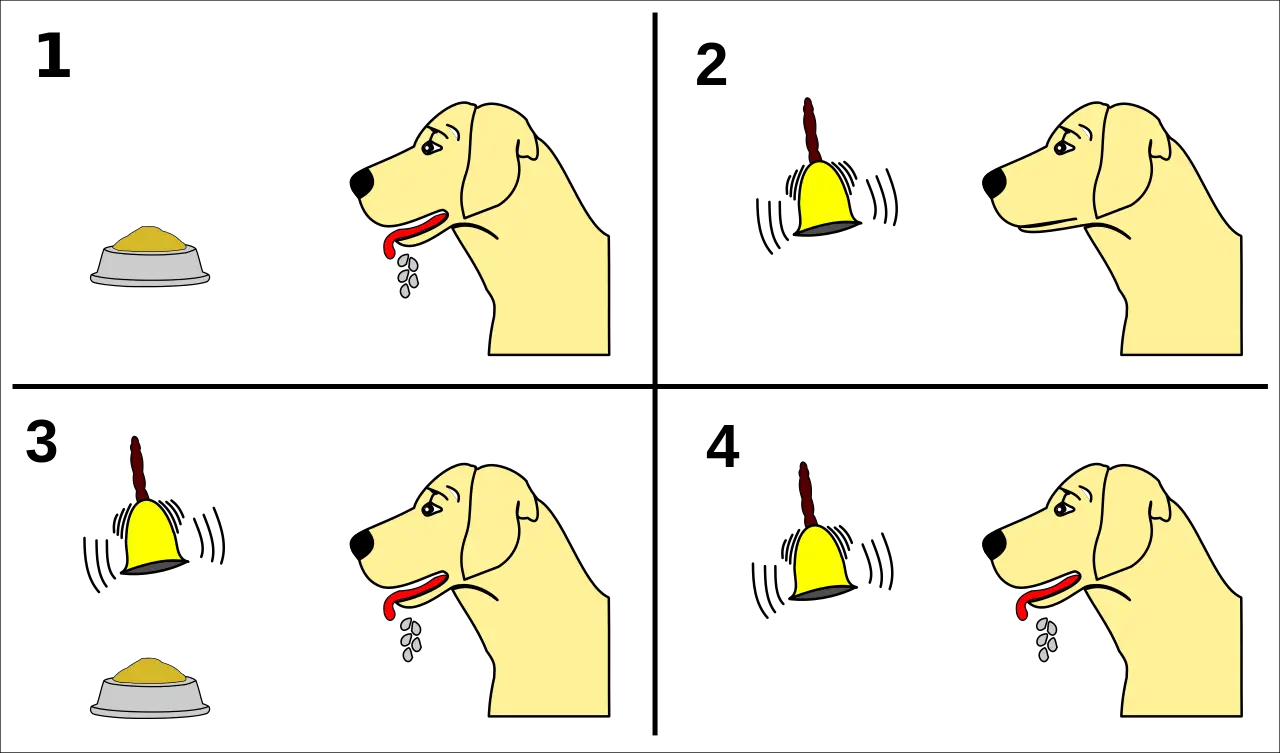Classical conditioning is a type of learning in which an organism learns to associate two stimuli together. A response that usually results from the second stimuli usually also results from the first. An example of classical conditioning is Pavlov’s experiments. Pavlov’s experiments analyzed the response of a dog when the dog would see food. In this example, the unconditioned stimulus is the food because it naturally elicits a response from the dog. The dog’s response of salivation is the unconditioned response which is a naturally occurring response. However, Pavlov would begin ringing a bell before presenting the food and eventually the dog would salivate upon hearing the bell. In this case, the sound of the bell and food became a paired stimulus. The sound of the bell is the conditioned stimulus which was initially an irrelevant stimulus but became associated with the unconditioned stimulus to trigger a conditioned response. The conditioned response was the learned response.

Many people believed that any association between two stimuli could be learned equally. In response, John Garcia conducted an experiment where he paired taste, sound and sight with radiation that would elicit the response of nausea in mice. He concluded that taste was strongly associated with the nausea. In this case, taste was the conditioned stimulus, radiation was the unconditioned stimulus, and nausea was the conditioned response. This experiment concluded that some things are easier to associate than others. This experiment also demonstrated the idea of taste aversion where humans are apt to have an aversion to foods if they become sick afterwards. For example, when I was in seventh grade, I went to a Mexican styled restaurant with family friends and ordered a chicken quesadilla. The family friends I went to the restaurant were recovering from the stomach flu and ordered chicken quesadillas. After enjoying my meal, I went home and went to bed. I woke up in the middle of night with abdominal pain and began to throw up. Reflecting on that night today, it was likely that I had caught the stomach flu and my nausea and uneasiness resulted from it. However, from that day, I could not eat any styled of Mexican food for two years; the thought of any Mexican styled food made me nauseous. Only recently have I been able to enjoy Mexican styled food. This is the perfect example of classical conditioning and how taste aversion works. The stomach flu was the unconditioned stimulus and nausea was the unconditioned response. Because of my pairing of the stomach flu and Mexican styled food, Mexican styled food was the conditioned stimulus and nausea became the conditioned response. Classical conditioning results from pairing any two stimuli; the pairing of some stimuli is stronger (like taste) than others.
Picture: https://www.psychestudy.com/behavioral/learning-memory/classical-conditioning/pavlov